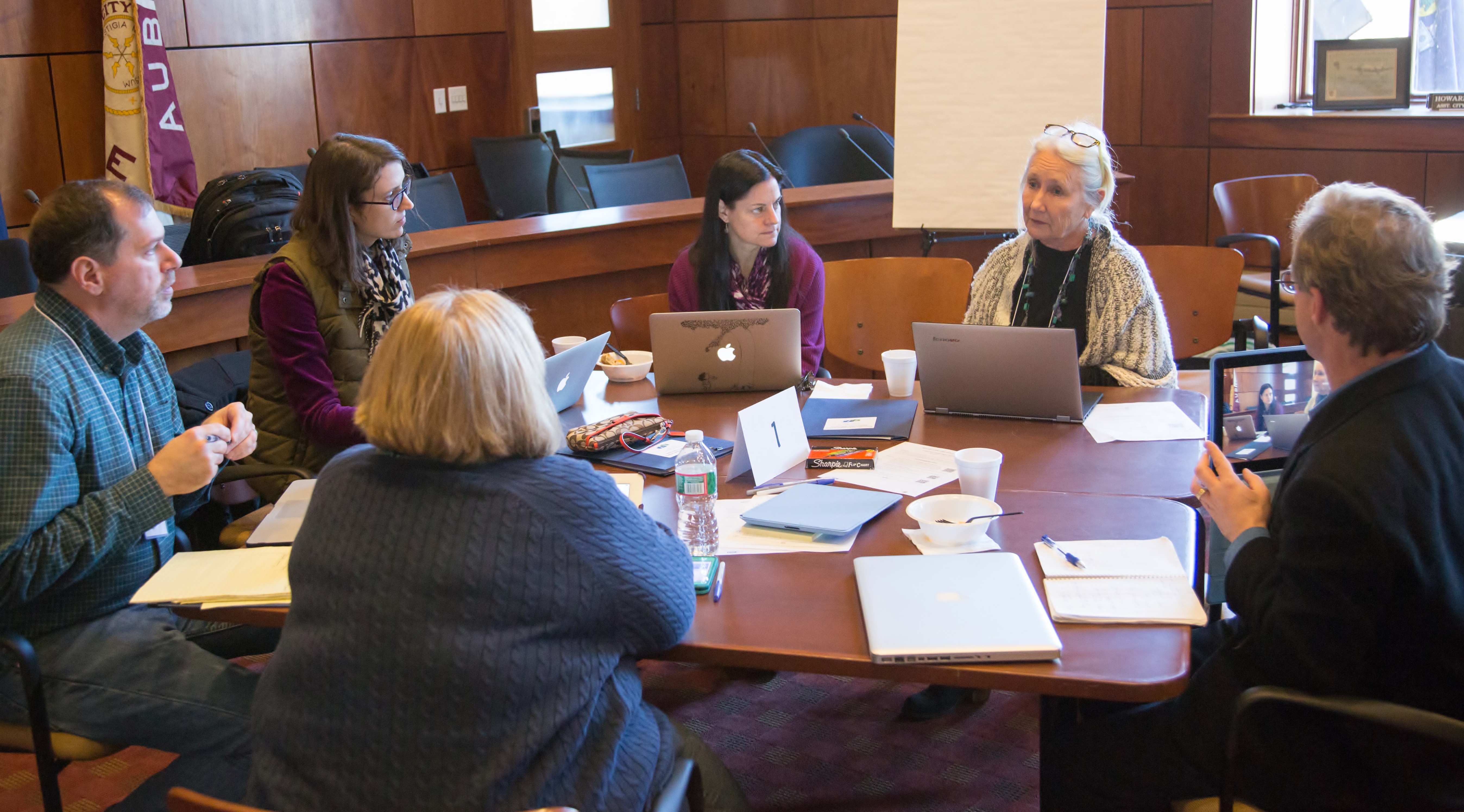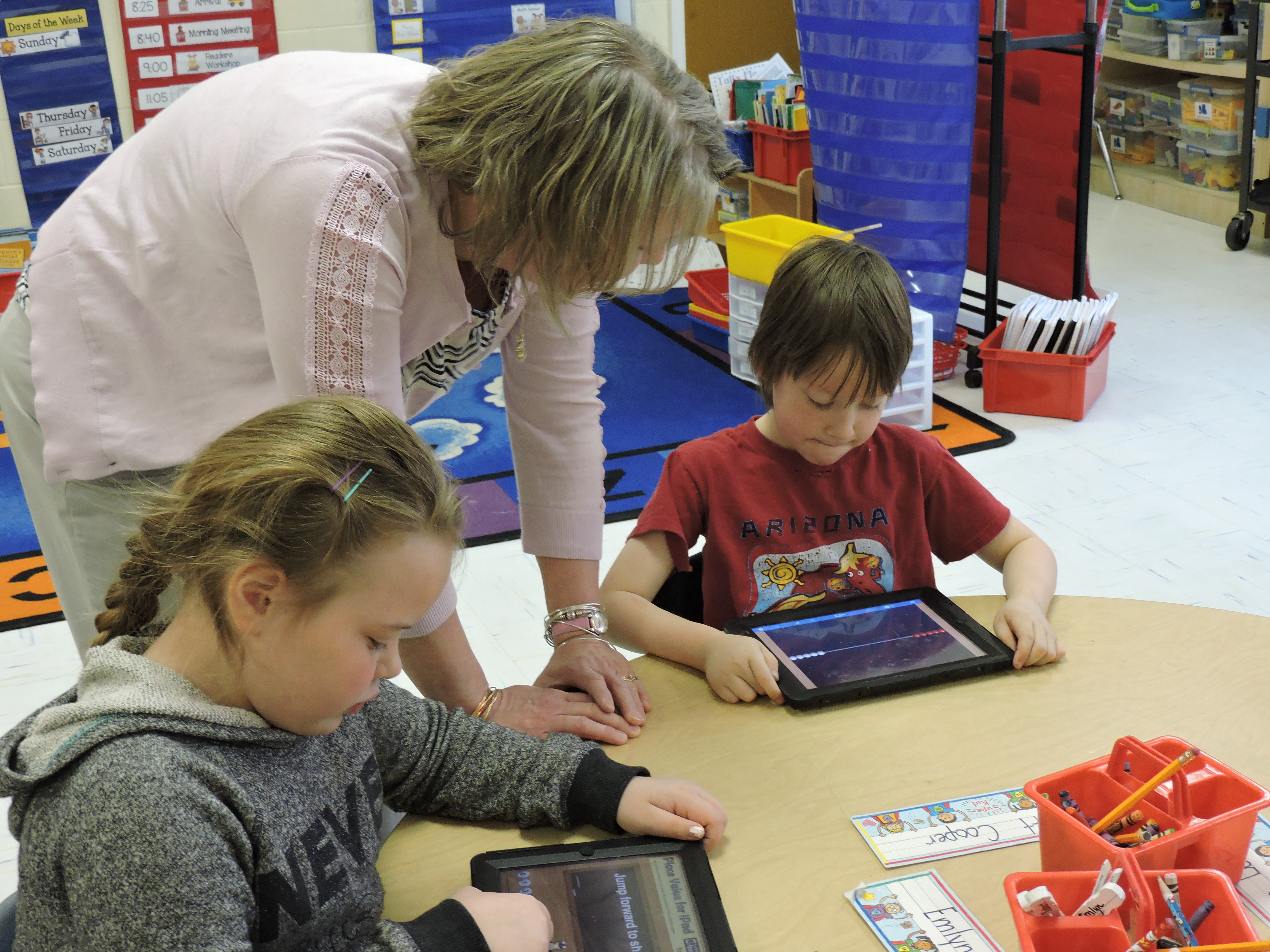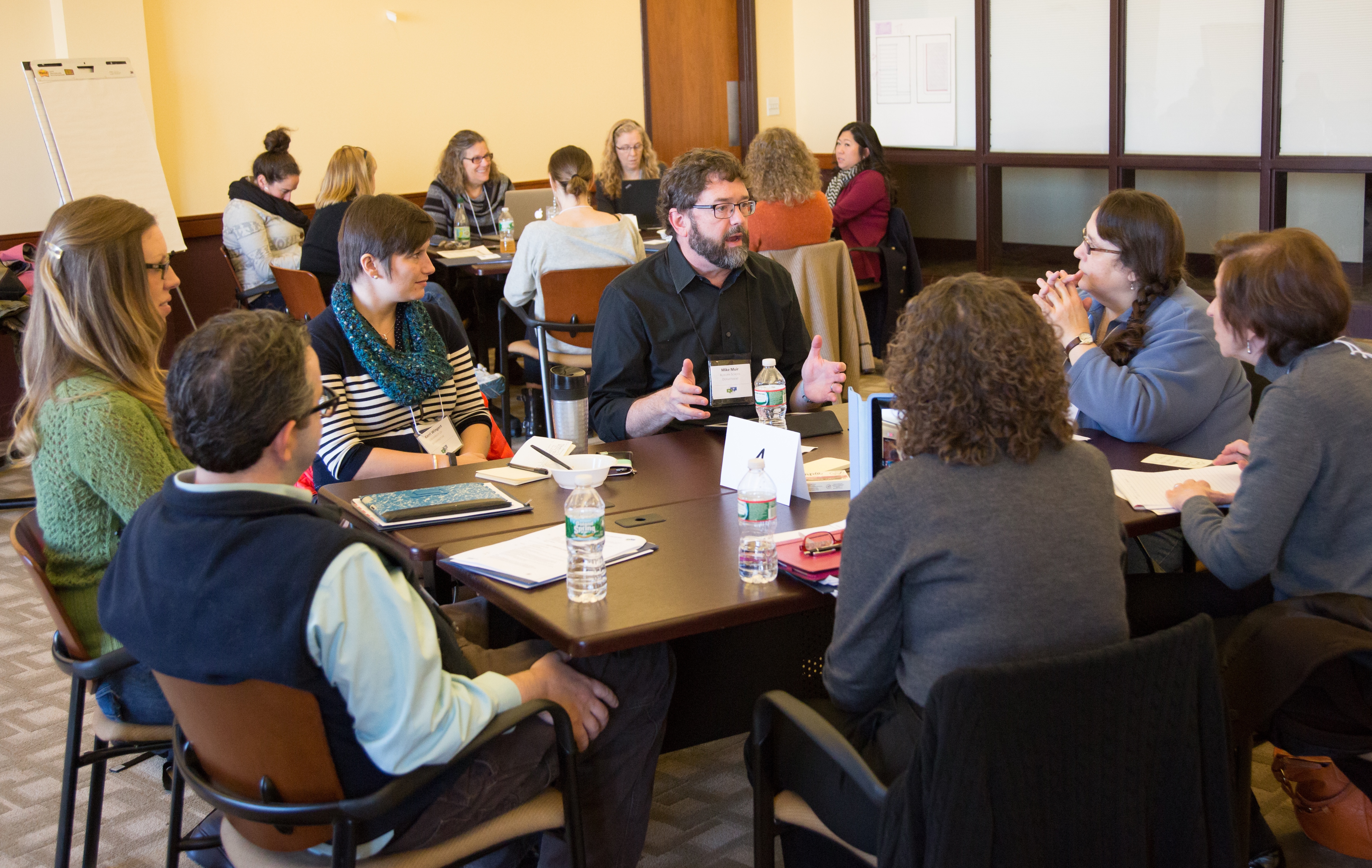Snapshots of Practice: Maine Educators and Researchers Co-Investigate Student iPad Strategies and Recordings
In Auburn, Maine, all eyes were focused on iPads as K–2 teachers shared interactive artifacts collected from students in their elementary mathematics classrooms. On this particular afternoon, the teachers were joined by mathematics education researchers, a principal, and preservice and other in-service teachers who watched them play back screencasts of students explaining how they had attacked the rich problems presented to them. The teachers then talked about the numerous processes they had watched their students use while the others listened and commented.
In the classroom, students had been presented with a problem and provided a number of hands-on manipulatives to puzzle through on their iPads. They were then asked to record their thinking and problem-solving with an app—Explain Everything™—that captured their voice, drawings, symbols, and actions.
The students began discussing their thinking as they gathered their materials and iPads and set to work. Some students modeled their thinking using markers and paper while others went straight to the iPads to make representations and map out their solutions. Others waited until they had fully worked out their answers before recording their thinking. Many students began the problem, made a preliminary recording, and then went back and edited or added to their recordings.
In this video, a second-grade student uses Explain Everything™ to talk through solutions to this word problem: “Andrea had some markers. When she put them in groups of 3, there was 1 left over. When she put them in groups of 4 there were 3 left over. If she had fewer than 20 markers, how many could she have had?”
Co-Investigation
During the playbacks of the student work, one preservice teacher provided additional context and explanation while other teachers and a math education researcher asked clarifying questions. A second-grade teacher talked about how her students in another school in the district had approached the same problem. They both described strategies that the students used to approach the problems, common struggles the students encountered, and the pedagogical strategies that they (the teachers) had used to support their students while maintaining sufficient rigor to allow students to experience productive struggle.
Mike Davis, the school principal attending the session, explained the deep level of engagement he had observed during the lesson, as well as the multiple strategies he had watched a teacher use to maintain engagement without providing the students the answer. “The teacher circulated around the room, did a lot of open-ended questioning, prompted the kids to think more, asked them to explain their reasoning, and then provided that wait time,” he said. “Each of the teachers in this cohort has done an excellent job allowing students to come up with their own ways to solve problems.”
Throughout the session, participants across roles shared new learning and the challenges that arose. They proposed strategies for managing the technology and ways to create tools to support students in creating explanations and screencasts to demonstrate their thinking without inhibiting their learning. They collectively questioned the specific affordances and limitations of the tools and strategies and posed new approaches to test within the participating classrooms.
Throughout the sharing session, the teachers, the principal, and the researchers had become co-investigators, analyzing the evidence before them and bringing different yet equitably valued perspectives to the questions they were exploring.
Note: The word problem is from Good Questions: Great Ways to Differentiate Mathematics Instruction, by Marian Small, Copyright © 2012 by Teachers College, Columbia University.







